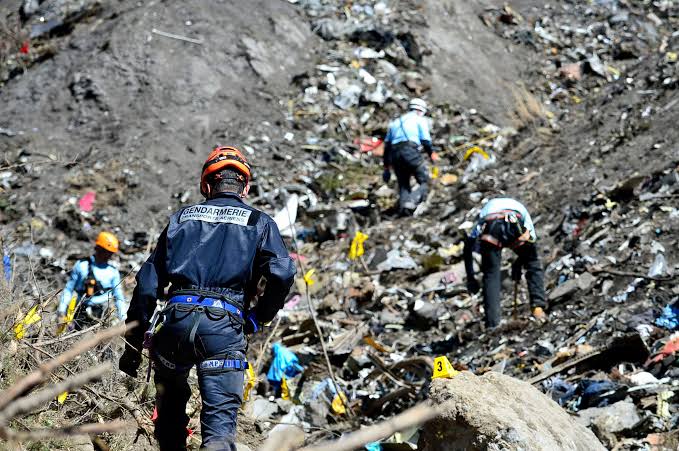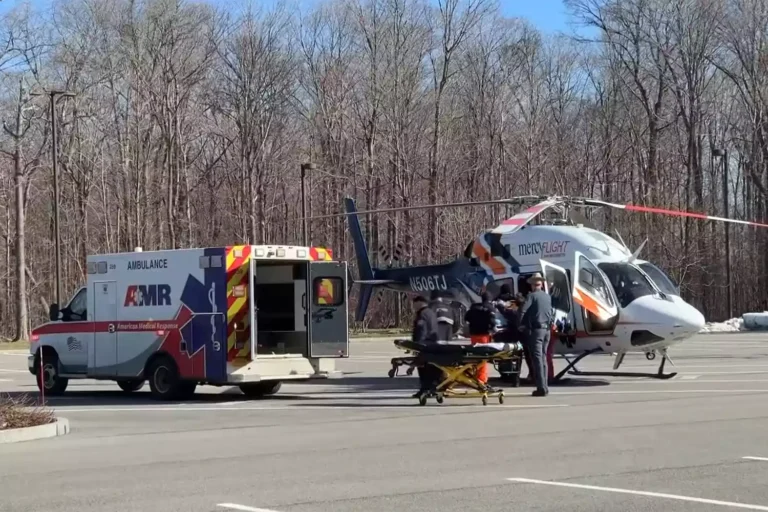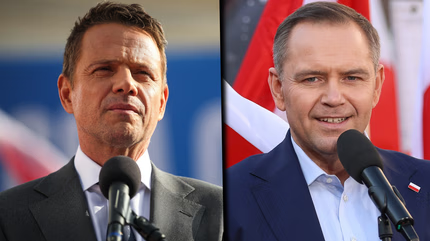Lufthansa Tragedy: Pilot Deliberately Crashes Plane, All Passengers Pronounced…….
Lufthansa Tragedy: Pilot Deliberately Crashes Plane, Killing All Aboard
By Staff Reporter
On a quiet Tuesday morning, the world awoke to one of aviation’s most harrowing tragedies. A Lufthansa-affiliated Germanwings flight, operating under the number 9525, crashed into the French Alps on March 24, 2015, killing all 150 people on board. In the aftermath, shock turned into disbelief when investigators revealed the crash was not due to technical failure—but a deliberate act by the co-pilot.
The Flight
Germanwings Flight 9525 departed Barcelona-El Prat Airport in Spain at 10:01 a.m. local time, bound for Düsseldorf, Germany. The flight was scheduled to take approximately two hours, covering a distance of just under 1,000 miles. Onboard were 144 passengers and six crew members, including citizens from over 15 nations. Among the passengers were schoolchildren on exchange programs, tourists, business travelers, and families returning from vacations.
The aircraft, an Airbus A320-211, had been in operation for over 24 years and was well-maintained. The airline, Germanwings, was a subsidiary of Lufthansa and operated as a low-cost carrier. Lufthansa had built a reputation for safety, making it hard to believe that this tragic incident could occur. No one suspected that this seemingly routine flight would soon be etched in history for all the wrong reasons.
As the flight ascended and reached its cruising altitude of 38,000 feet, everything seemed normal. However, in less than an hour, disaster struck.
Descent into the Alps
Approximately 30 minutes after takeoff, the aircraft reached its cruising altitude. At this point, the flight was operating smoothly—there were no signs of mechanical failure, no abnormal readings from the flight crew, and no indication that anything was wrong.
However, at approximately 10:30 a.m. local time, a critical event occurred: the plane suddenly started to descend. Air traffic control in France was alerted to the descent but initially thought the aircraft might be experiencing a temporary issue or following standard procedures. Yet, the descent continued far longer than expected. The altitude dropped steadily from 38,000 feet to 6,000 feet in a span of about 10 minutes, with no communication from the crew.
The situation was becoming increasingly dire. Air traffic controllers attempted to re-establish contact with the aircraft, but there was no response. At 10:40 a.m., Flight 9525’s radar signal disappeared from air traffic control screens. The plane had crashed into the French Alps, near the village of Prads-Haute-Bléone, in a remote and mountainous region.
Rescue teams were immediately dispatched to the crash site, but the terrain posed severe challenges for recovery efforts. The wreckage was scattered over a large area, and it was clear that the aircraft had been completely destroyed. There were no survivors, and all 150 individuals on board lost their lives.
The Horrifying Discovery
After the crash, investigators from the French Bureau of Enquiry and Analysis for Civil Aviation Safety (BEA) quickly arrived at the site to begin their investigation. Their primary goal was to determine the cause of the crash. They initially speculated that it might have been caused by a technical failure or some sort of mechanical malfunction.
However, as the investigation unfolded, the discovery of the cockpit voice recorder (CVR) provided an answer that no one could have anticipated. The recording revealed a chilling sequence of events.
At some point during the flight, the captain of the aircraft had left the cockpit. This was routine—a standard procedure for pilots to step away from the cockpit during long flights. But it was what happened afterward that shocked the world. The co-pilot, Andreas Lubitz, locked the cockpit door behind the captain and initiated a controlled descent.
The recording captured the captain banging on the cockpit door, trying to regain access to stop the descent. The voice recorder also picked up the sound of passengers screaming as they realized what was happening. Incredibly, throughout the entire descent, Lubitz did not respond. His breathing remained calm and normal, indicating he was not in distress.
The evidence revealed that Lubitz had deliberately crashed the plane. It was a calculated act of violence that resulted in the deaths of everyone aboard the aircraft.
Who Was Andreas Lubitz?
Andreas Lubitz was 27 years old, a German national, and a co-pilot at Germanwings. He had joined the airline in 2013, and his career had seemed promising. He had logged over 600 flight hours and had a reputation as a capable pilot. He had also completed extensive training and was cleared to fly the Airbus A320.
However, as investigators dug deeper into Lubitz’s background, they uncovered a disturbing history. Lubitz had suffered from severe mental health issues, including depression and suicidal thoughts. In the months leading up to the crash, he had sought treatment for these conditions but had kept his struggles a secret from his employer.
It was later revealed that Lubitz had been diagnosed with depression and had been unfit to fly, according to medical professionals. However, he had concealed his condition from both his airline and the authorities. He had even gone as far as to tear up a doctor’s note that excused him from duty on the day of the flight.
Lubitz’s mental health issues raised serious questions about how an individual with such a condition was allowed to continue working as a commercial pilot. The tragic consequences of his actions would prompt a global reevaluation of mental health screening processes within the aviation industry.
Lufthansa Under Fire
In the wake of the disaster, Lufthansa found itself under intense scrutiny. The airline had always prided itself on its safety record, but the Germanwings crash raised fundamental questions about the airline’s oversight and its mental health policies for pilots.
Lufthansa CEO Carsten Spohr addressed the media following the release of the investigation’s findings. “No matter what we do, no matter what security measures we take, there will always be one element that we cannot completely rule out—and that is the human factor,” Spohr stated, visibly shaken by the events.
The airline faced legal challenges from the victims’ families, who accused Lufthansa of negligence in failing to properly monitor Lubitz’s mental health. Some families also questioned whether the airline could have detected his issues earlier through better screening processes.
The tragedy prompted calls for greater transparency and more stringent mental health evaluations for airline staff. While the crash was not a result of a technical failure, the human element—Lubitz’s decision to deliberately end the lives of everyone on board—created a new set of challenges for aviation safety.
Policy Changes and Reforms
In the wake of the disaster, many airlines around the world enacted the “two-person cockpit rule.” This policy required at least two people to be present in the cockpit at all times during a flight, effectively preventing a single crew member from locking the cockpit door and taking such extreme actions. The rule was quickly adopted by the European Union, Canada, and the United States, and is now a standard practice in the aviation industry.
In addition to the cockpit security measures, mental health screening became a central issue in the aftermath of the Germanwings crash. The aviation community realized that the intense stress and isolation of being a commercial pilot could sometimes have serious consequences for a pilot’s mental well-being. Several countries introduced mandatory psychological evaluations for pilots and recommended that they be given more support and resources to cope with mental health challenges.
While the Germanwings disaster was the first such incident of a pilot deliberately causing a crash, it was not the first time that mental health had been a concern within the aviation industry. The crash forced many airlines to reevaluate their approach to the mental health of their staff and passengers’ safety.
The Victims and Their Families
The victims of Germanwings Flight 9525 were not mere statistics—they were human beings, each with a story and a life cut tragically short. Among the 150 passengers were 16 schoolchildren and two teachers from the Joseph-König-Gymnasium in Haltern, Germany. The students had been on a trip to Spain as part of an exchange program, and their deaths left a gaping hole in their community.
Across Europe, tributes poured in for the victims. Memorial services were held in Germany, Spain, and France, as well as in many other countries affected by the tragedy. The grieving families received an outpouring of support, but their pain remained incomprehensible.
Lufthansa, in an attempt to offer compensation, provided financial support to the families. However, as the families would later express, no amount of money could ever ease the anguish they felt. Many turned their focus to advocating for change within the aviation industry, hoping to ensure that such a tragedy would never happen again.
Legal and Ethical Questions
The crash of Germanwings Flight 9525 prompted intense legal and ethical debates. The families of the victims filed lawsuits against Lufthansa, accusing the airline of failing to detect and address Lubitz’s mental health issues. Legal experts weighed in on whether the airline could have been more proactive in monitoring its pilots’ health and safety.
Additionally, the crash raised questions about the security of the cockpit. After the 9/11 attacks, airlines had introduced reinforced cockpit doors to prevent hijacking. But in the case of Germanwings 9525, the very same security measure that was designed to protect against terrorists inadvertently prevented the captain from regaining control of the plane. Critics argued that there needed to be a balance between safety and practicality.
Furthermore, the tragedy prompted a reexamination of mental health practices across industries, not just aviation. Could there be a way to identify individuals at risk without infringing on personal privacy? Could mental health issues in pilots be treated with more transparency and support rather than fear of job loss? These are questions that the aviation industry and governments around the world continue to struggle with.
A Legacy of Lessons
The legacy of Germanwings Flight 9525 is a tragic one, but it has led to significant changes in the way the aviation industry approaches safety and mental health. The two-person cockpit rule became a global standard, ensuring that no single individual could ever again hold the lives of passengers hostage in the way that Andreas Lubitz did. Aviation regulations around the world began to emphasize psychological screening for pilots and other aviation staff.
The crash also prompted more open discussions about mental health in high-pressure jobs. The stigma surrounding mental illness in the aviation industry, and society as a whole, began to slowly erode as companies and workers realized that mental health care and support were essential for safety.
Conclusion
The Lufthansa-Germanwings tragedy remains one of the most heartbreaking moments in modern aviation history. It was a moment when the aviation industry, and indeed the world, realized that there are dangers in the sky that cannot always be foreseen. It was a moment when trust was shattered, not by mechanical failure or terrorism, but by the actions of a single individual battling inner demons.
Yet, the legacy of this tragedy is not defined solely by the horror of that fateful day, but by the changes it sparked. The two-person cockpit rule, improved mental health protocols, and greater transparency have made aviation safer for all passengers. But as we remember the 150 victims who lost their lives on that fateful day, we are reminded of the fragile balance between human emotion, technological advancement, and the complexities of modern flight.
The world will never forget the victims of Germanwings Flight 9525. Their lives were tragically cut short, but their story remains a catalyst for positive change in aviation safety and mental health awareness.






